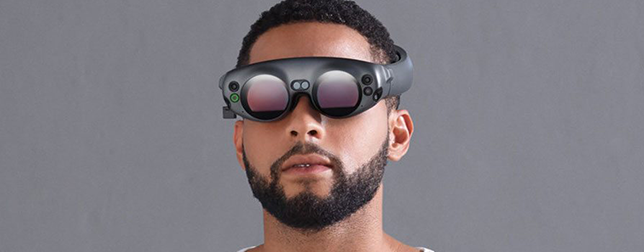Following a few years of development, Magic Leap said it will finally ship its Magic Leap One Creator Edition to developers this summer. The new announcement is more specific than what the company had previously said, which was before the end of 2018, but after a little follow-up it was slightly dubious whether they would actually hit that deadline.
Magic Leap will use Tegra X2, which means that the spatial computer’s total horsepower will be significantly ahead of the Nintendo Switch console, which uses a Tegra X1. The hardware contains a Parker system-on-chip consisting of two ARM A57 CPU cores that are fully available to developers, a Denver “special use case” CPU core, and a 256 CUDA-core Pascal GPU, according to Alan Kimball, Lead of Developer Technology Strategy at Magic Leap. One of the ARM cores is dedicated for graphics, while another is for game and app logic; it seems that the additional Tegra X2 cores are reserved in case of operating system overhead.
Read more Samsung and Apple Reportedly Working on a Wireless AR/VR Headset
The underlying software architecture for the Augmented Reality glasses is a 64-bit Linux-based OS called Lumin. A unified memory system allows developers to partition as needed. The company hasn’t disclosed how much memory the device will include, but suggested that they haven’t received any complaints about limitations.
Magic Leap also said that each of the cores has different energy consumption and performance characteristics, and developers will be able to choose between cores depending on their needs. The company previously promised “several hours” of battery life, depending on the apps in use.
For running PC graphics code directly, it offers full OpenGL 4.5 support. Also included are OpenGL ES 3.1 and Vulkan support, though the company strongly suggests using Vulkan for optimal performance. Unity support is already running, and Unreal Engine 4 support will be arriving soon.
Now, the question is, when will we see a consumer-oriented Magic Leap device? It’s not clear. No one even knows the price for the Magic Leap One, except that it won’t be more expensive than a pricey phone. However, Magic Leap CEO Rony Abovits said on Twitter that there will be more info on ML Next later this week. ML Next is Magic Leap’s mysterious next device.
Read more Augmented Reality Getting Even More Realistic With Big Businesses Jumping In
Finally, few video demos shown by Magic Leap revealed new features in the SDK, which include the ability to recognize gestures.
The startup has raised at least $2.3 billion, according to Crunchbase, from investors including Google, Alibaba, Andreessen Horowitz and a few others. The company also announced an investment from and partnership with AT&T.













